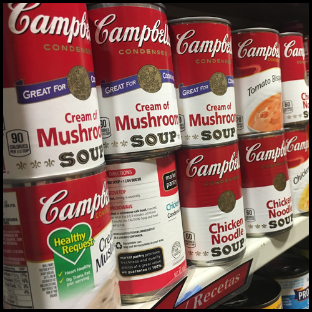This January I had the opportunity to spend a week interning with the sustainability department for the University of Maryland (UMD) Dining Services. I had an idea about what sustainability was, but never had a chance to really dive into the details of it, so I was looking forward to learning as much as I could in a week. My preceptors here did a great job of scheduling activities for us around campus and on the Terp Farm so I could get a good idea of what sustainability is.
Sustainability
Sustainability is the practice of producing foods, such as fruits and vegetables, in a manner that has a protects the environment, wildlife, public health, and communities. The Sustainable Agriculture Research and Education Program, a leader in sustainability, has a website detailing both the philosophy and practical aspects of sustainable agriculture. It lists three primary goals of sustainable agriculture: environmental health, economic profitability, and social-economic equity. To accomplish these goals, farms use methods of growing and harvesting that promote soil health, reduce water use, and lower pollution levels. These methods can include crop rotation, using organic material to retain soil moisture, and composting.
The Terp Farm
The Terp Farm is a sustainable farming operation managed by UMD’s Department of Dining Services, College of Agriculture and Natural Resources, and Office of Sustainability. It is located about 15 miles from UMD’s College Park campus, where many of the crops are delivered and used to produce meals for students.
The short travel distance and use of a small van reduces the Terp Farm’s transportation costs. This, coupled with reduced water consumption and use of organic fertilizers, among other things, allows the Terp Farm to keep financial costs low and remain profitable.
Campus Pantry

 On one of my last days, I got to volunteer at the Campus Pantry. The Campus Pantry is working to eliminate food hardships at the UMD College Park campus. It provides good quality, nutritious foods to students, faculty, and staff. Some food products are purchased with department funding, which is possible due to the economic profitability of the department’s other projects, but the great majority of foods are donated by the local communities. In this way, the Campus Pantry completes the third goal of sustainability, promoting social and economic equity. Those that have the ability to provide additional resources donate to the Pantry, which allows the pantry to offer low-cost foods and personal products to those that would otherwise go without.
On one of my last days, I got to volunteer at the Campus Pantry. The Campus Pantry is working to eliminate food hardships at the UMD College Park campus. It provides good quality, nutritious foods to students, faculty, and staff. Some food products are purchased with department funding, which is possible due to the economic profitability of the department’s other projects, but the great majority of foods are donated by the local communities. In this way, the Campus Pantry completes the third goal of sustainability, promoting social and economic equity. Those that have the ability to provide additional resources donate to the Pantry, which allows the pantry to offer low-cost foods and personal products to those that would otherwise go without.
At the moment, the campus pantry is located in the basement of the Campus Health Clinic, but there are plans to move to a larger facility that will allow for cold-storage. During my time volunteering there, I helped to unpack recent donations, screen items for expiration dates and quality, and sort items into their respective categories. The Campus Pantry organizes foods based on the type, such as grains and pasta, beans and soups, and vegetables. They even have a gluten-free section!
Overall, I really enjoyed my time working with Campus Dining’s Sustainability department at UMD. I learned a lot about sustainable agriculture and how it strives to protect the health of the environment. Sustainable farming practices also attempt to reduce resource consumption and then give back to the community to promote social and economic equity. Sustainability allows the current generation to meet its needs while protecting future generations’ ability to do the same. The work they are doing at UMD seems to be doing just that.
No comments:
Post a Comment